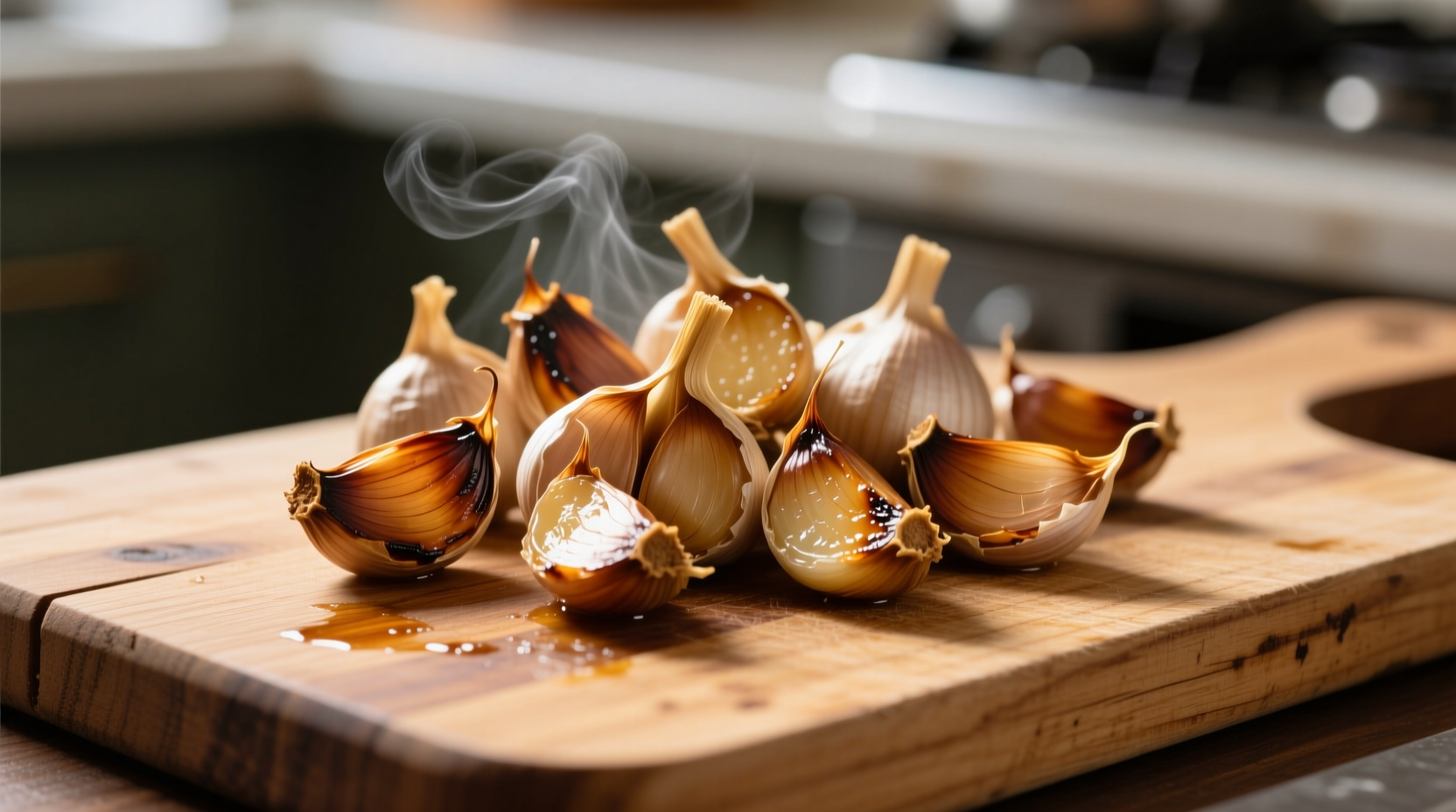Nothing transforms humble garlic like proper oven roasting—turning sharp, pungent cloves into sweet, mellow flavor bombs that elevate everything from mashed potatoes to salad dressings. Getting the timing right separates decent roasted garlic from truly exceptional results. This guide delivers precise timing based on temperature, garlic size, and desired doneness level.
Why Timing Matters for Perfect Roasted Garlic
Garlic transitions through distinct flavor stages as it roasts. Undercooked garlic retains harsh, bitter notes while overcooked cloves develop unpleasant bitterness. The sweet spot occurs when enzymatic reactions fully convert garlic's natural sugars without burning. Professional chefs at the Culinary Institute of America confirm that precise timing is the single most critical factor for achieving that signature creamy texture and complex sweetness.
Temperature-Time Relationship Guide
| Temperature | Whole Head | Individual Cloves | Best For |
|---|---|---|---|
| 400°F (200°C) | 40-45 minutes | 25-30 minutes | Standard preparation, balanced flavor |
| 375°F (190°C) | 45-50 minutes | 30-35 minutes | Deeper caramelization, less risk of burning |
| 325°F (160°C) | 55-60 minutes | 40-45 minutes | Maximum sweetness, ideal for sensitive palates |
This temperature-time relationship follows Maillard reaction principles documented by food science researchers at UC Davis. Lower temperatures require longer cooking times but produce more complex flavor development with reduced risk of bitter compounds forming.
Step-by-Step Roasting Process
Preparation Phase (5 minutes)
Trim the top 1/4 inch from whole garlic heads to expose cloves. Drizzle 1-2 teaspoons of olive oil over each head, ensuring oil penetrates between cloves. Wrap tightly in aluminum foil with the cut side up. For individual cloves, toss with oil and arrange in a single layer on a parchment-lined baking sheet.
Cooking Phase (Your Timing Window)
Place wrapped garlic heads on the middle oven rack. For whole heads at 400°F, begin checking at 35 minutes. Individual cloves need monitoring starting at 20 minutes. The USDA Food Safety and Inspection Service recommends maintaining oven temperatures at or above 325°F to prevent bacterial growth during extended cooking times.

Doneness Indicators Timeline
Watch for these visual and tactile cues as your garlic approaches perfection:
- 20-25 minutes: Raw garlic aroma transitions to nutty fragrance
- 30 minutes: Cloves begin softening when pressed
- 35-40 minutes: Golden brown color develops at exposed tips
- 40-45 minutes: Cloves become completely soft and spreadable
Food scientists at the Institute of Food Technologists note that roasted garlic reaches optimal flavor complexity at the 40-minute mark when cooked at standard 400°F temperatures. Beyond this point, beneficial compounds begin breaking down.
Avoiding Common Roasting Mistakes
Home cooks frequently encounter these timing-related issues:
Bitter Garlic Blues
Overcooking causes garlic's natural sugars to burn, creating unpleasant bitterness. If your roasted garlic tastes bitter, you've likely exceeded the 45-minute mark at 400°F. Solution: Reduce temperature to 375°F and check 5 minutes earlier next time.
Undercooked Results
Garlic that remains firm or tastes sharp needs more time. This commonly happens when oven temperatures run low. Professional kitchens use independent oven thermometers to verify accuracy—a practice home cooks should adopt. The National Institute of Standards and Technology recommends calibrating home ovens every six months for cooking precision.
Storage and Usage Tips
Properly roasted garlic keeps for one week refrigerated in an airtight container. For longer storage, freeze cloves in ice cube trays covered with olive oil—they'll maintain quality for three months. Chefs at James Beard Award-winning restaurants often prepare large batches for consistent flavor in sauces and dressings throughout the week.
Perfect Pairings for Roasted Garlic
Maximize your perfectly roasted cloves with these professional applications:
- Blend with softened butter for compound butter
- Mash into mayonnaise for sandwich spread
- Stir into mashed potatoes or roasted vegetables
- Whisk into vinaigrettes for complex salad dressings
- Spread on crusty bread as an appetizer
Frequently Asked Questions
Can you roast garlic at 350 degrees?
Yes, roasting garlic at 350°F requires 50-55 minutes for whole heads. This lower temperature produces deeper caramelization with reduced risk of burning, ideal for beginners. Check for doneness starting at 45 minutes by gently squeezing the head.
How do you know when roasted garlic is done?
Roasted garlic is done when cloves become completely soft and golden brown. Test by inserting a knife tip—it should slide in with no resistance. The cloves will have a sweet, nutty aroma rather than sharp garlic scent. Properly roasted garlic should be easily squeezable from the skin.
Why is my roasted garlic hard?
Hard roasted garlic indicates undercooking. This happens when oven temperature runs low or timing is insufficient. Increase temperature to 400°F and roast 5-10 minutes longer. Always verify oven temperature with an independent thermometer, as home ovens frequently have calibration issues affecting cooking results.
Should roasted garlic be covered?
Yes, covering garlic with foil during roasting traps steam, promoting even cooking and preventing burning. Professional chefs always wrap garlic heads tightly in foil with the cut side up to allow oil to penetrate cloves. Uncovered roasting leads to uneven results and potential burning of exposed tips.
Can you roast garlic without oil?
While possible, roasting without oil yields drier results with less flavor development. Oil carries heat evenly and facilitates the Maillard reaction essential for flavor transformation. For best results, use 1-2 teaspoons of high-quality olive oil per head. The oil also helps preserve roasted garlic during storage.











 浙公网安备
33010002000092号
浙公网安备
33010002000092号 浙B2-20120091-4
浙B2-20120091-4